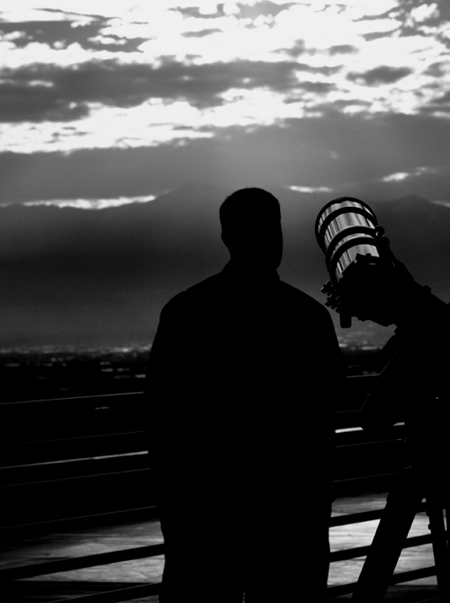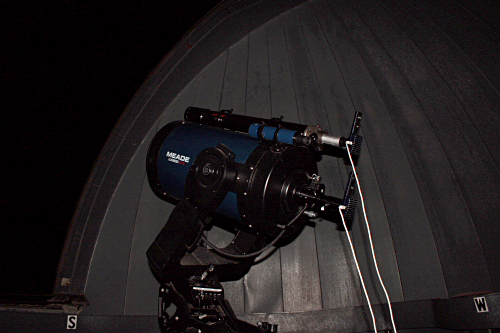
Brief History and Future
There has been an observatory of some type since the early years of the University of Utah. Older visitors in the ages of 60's and 70's visiting the observatory tell of when they were just 10 years in age, going to the U's observatory with their family to see Jupiter and Saturn. Originally, they were using an observatory close to where the physics buildings reside currently. The observatory's current dome was built on the roof of the South Physics building in 1976 and housed a 16 inch Cassegrain telescope, which now resides at the Stansbury Park Observatory Complex. After the university was required to install an elevator, the observatory went through another change. In 2001, the Willard L. Eccles Foundation donated funds to purchase new telescopes, cameras, a spectrograph, and other items for the observatory which is now on the roof of the South Physics building. New mounts and housings were installed for the telescopes and we have the observatory as we see it today. Once more in 2012, they donated again to provide upgrades for the telescopes, cameras, and computer systems and are now fully computerized at each station.
The observatory is currently used to host our star parties, scout tours, K-12 school tours, and as a classroom lab for the U's Observational Astronomy course (phys 2060/4060, astr 2060/4060). The Observational Astronomy course provides instruction on telescope use, astrophotography, basic and advanced astronomy research techniques. Class sizes range from 15 to 30 students per semester and is growing in popularity each year. Currently, the U offers a minor in astronomy and within the next few years, the U hopes to have a undergraduate major and graduate program in astronomy and astrophysics. The Department of Physics and Astronomy has hired several new astronomy professors for the upcoming majors and research. For more information on the current minor offered by the U physics department, click here
The Willard L. Eccles Foundation and the E.R. & E.W. Dumke foundation have donated funds for a new observatory for the University of Utah to be installed at Frisco Peak in southern Utah. The scope is installed and operating and the facilities are being developed for remote operations. The telescope purchased from DFM Engineering is an open truss Cassegrain design, fork mounted, 32 inch telescope. The type of research will possibly include infrared observations, extra terrestrial planet searching, gamma ray bursts (optical counterparts), and others. Another goal is to use the telescope for public outreach during star parties held at SPO. For more information, visit the Willard Eccles Observatory website.
|
